The Ultimate Guide to Stride Piano
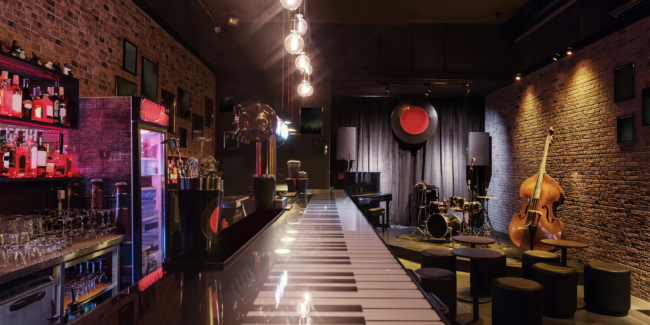
Want to learn the art of stride piano? In this article, we’ll explain the history of stride piano and give you tools to stride along with its swinging, grooving rhythm.
The beautiful thing about music is its evolution over the centuries. Like an endless stream of babushka dolls, each one opens to reveal a new character, a new genre, a new expression of humanity.
Classical music influenced ragtime. Ragtime did the same for blues, blues for pop music — the list goes on.
Stride piano was the love child of ragtime and the blues – a playful, cheerful musical style that took the world by storm in the 1920s. Keep reading to learn about the history of stride piano and some tips for playing stride piano with your own two hands.
What is stride piano?
Stride piano is a technique from the early 20th century in the United States. It is conceptually simple but technically demanding. The style is based on a specific left-hand pattern of movement on the piano. The practice involves playing a low bass note on beats one and three of the bar and a chord on beats two and four. This creates a bouncing feeling, much like a spritely walk or stride – hence its name.
Stride piano players use the right hand to play iconic blues melodies and improvise using the blues and major scales.
The history of stride piano.
The most popular musical genre in the western world at the turn of the 20th century was ragtime music. It was primarily played by African-American musicians and was given its name because of the irregular or syncopated rhythms played by the right hand, supported by a very steady left-hand rhythm.
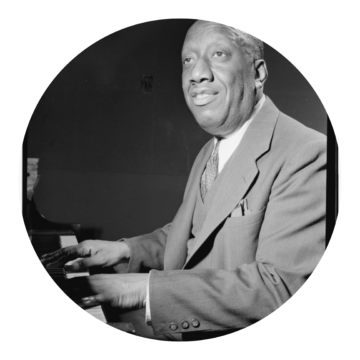
In the 1920s, ragtime piano became less and less popular, with blues music on the rise and taking the reins of the leaders in popular music. Eventually, musicians felt a necessity for change, and thus, the stride piano was born. Its birthplace was Harlem, New York, and its father was James P. Johnson.
Johnson was heavily influenced by one of the greatest ragtime players, Scott Joplin. However, he wanted to innovate, to push the ragtime rhythms further – so he began to stride his way into something new. This was most evident in his aptly named piece “You’ve Got to Be Modernistic.”
Famous stride piano players.
Let’s take a closer look at some of the forbears of the stride piano style to understand its roots and heritage better.
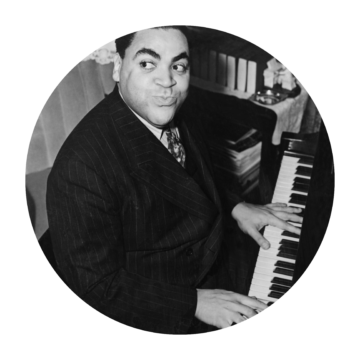
Fats Waller
In his short life of 39 years, Waller earned himself a name as one of the century’s greatest musicians. He was a recording and performing musician for 21 years, beginning as Johnson’s student but quickly graduating to be his peer.
He was full of life and vibrancy – a true entertainer. His songs are standard in the world of jazz. To this day, jazz students all over the world study his music and eagerly watch all of the recorded footage of his performances, trying to absorb every last drop of his contagious energy.
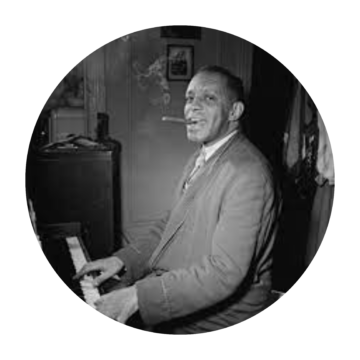
Willie “The Lion” Smith
Smith engraved his name on the stride map with his classic “Finger Buster” – so much so that nobody would honestly call themselves a stride piano player unless they can play this tune.
He was one of the “Big Three,” along with Johnson and Fats Waller, but he was more of a musician’s musician. He was deeply admired by his peers and hugely influential on the next generation of jazz musicians, such as Duke Ellington.
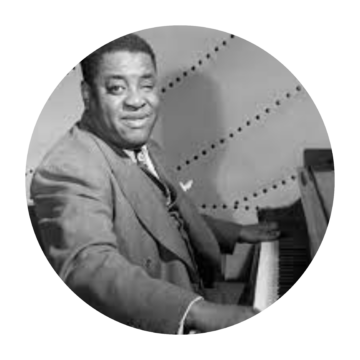
Art Tatum
Legend has it that when Fats Waller would play piano in the clubs of Harlem and Tatum would enter, he would stop playing and say into the microphone, “I only play the piano. Tonight, God is in the house.”
Indeed, Tatum was considered to be a musician of divine proportions by all who encountered him. Though he was not strictly a stride pianist. The likes of Johnson unequivocally influenced his style. And yet, Tatum was a unique phenomenon.
Very few can emulate his technical prowess and special touch of the keys to this day. Check out his classic song “Tea for Two” for a taste of his magic.
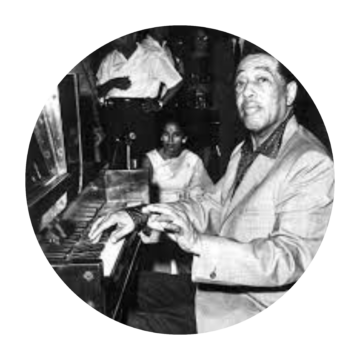
Duke Ellington
Most people don’t consider Ellington a stride pianist – though he may have thought himself to be.
Ellington took the essence and the energy of stride piano and found within it another babushka doll: swing. His music swept the world swiftly and powerfully, leading him to a wildly successful career as a composer, big band leader, pianist, and the father of many of the jazz greats who followed him, such as Thelonius Monk.
Tips for playing stride piano.
Don’t eat the whole cake at once. Stride piano might sound straightforward, but its execution involves a high level of technique. Here are a few crucial tips for practicing the foundations of stride piano.
Practice the left-hand part with two hands.
As mentioned earlier, the essence of the stride style is that the left hand plays a bass note on beats one and three and a chord on beats two and four. This is a lot of information for a beginner to carry in the left hand.
To start with, split this part between both hands. Take a standard stride piano chord progression, and practice playing the bass notes on beats one and three in the left hand and the chords on beats two and four in the right hand. This will help you familiarize yourself with the “oompah” groove and get your finger muscles warm and flexible.
Practice improvising on a blues scale in your right hand.
The flavor of stride music is deeply rooted in the sound of a blues scale. Make sure you are familiar with the scale and practice improvising in time on this scale with your right hand. Turn on your metronome, perhaps to 80bpm. In your left hand, you can just play single bass notes on beats one and three – in the right hand, explore some improvised melodies using the blues scale. Here is the formula of the blues scale, with an example of the notes in a few different keys:

Practice the stride pattern in the left hand, without the right hand.
Once you’ve practiced the first two tips, have a crack at the real deal in your left hand. Take a simple stride piano chord progression and practice playing it like the big dogs do: bass note on one and three, the chord on two and four. Do it real slow, with the metronome at 40bpm. When it feels comfortable, keep the tempo up until you’re at a nice striding tempo of 120bpm.
Take it in your stride.
Don’t get bogged down if you find the stride piano technique to be too complicated at the moment. It does require a lot of patient practice, physical agility, and mental focus.
It isn’t suitable for everybody, definitely not for beginners. Take it slow, consult your teachers, and keep your spirits up. In the end, the secret to playing stride is hidden in its name — a lively, graceful stride.









